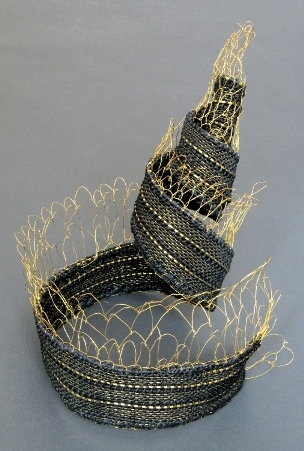Monika Škvarnová
From June to August 2008, The Museum of Považie Region in Žilina displayed an exhibition of contemporary wire jewellery and clothing accessories made by the Slovak and Czech designers. Wire as an artistic medium possessing creative aspects such as flexible shape, grain flow, transparency and strength entered the Slovak jewellery in the early 1970s. The jewellery art gained its independent position at the same time. Among pioneering artists who exchanged traditional jewellery materials for wire were Remigia Biskupská and ÚĽUV designer Jana Menkynová. Biskupská was the first to begin with a Great Moravian spiral inspiration and Menkynová started to create folk-style jewellery. Blanka Šperková joined the wire trend in the mid 1970s and has designed small plastic art jewellery.
Further arts and crafts makers, visual artists and designers redirected their attention to wire in the 1990s. They have modified traditional tinkering and textile techniques to fit modern art forms. Some artists combine traditional wire weaves and elements with semi-precious stones and glass, point lace and semi-precious stones and pearls, others prefer bobbin-lace technique. Contemporary jewellery artists often use the traditional chain principle, wire drawing, plastic weave and wire-and-sheet combination. Flexibility of wire encourages artists to seek new forms, explore new techniques (such as Zuzana Rudavská, Zuzana Flimelová) and experimenting with shapes, meanings and functions (Júlia Kunovská).
Often combining textile and wire, techniques inspired by textile processing dominate the clothing accessories category. The exhibition proved that, by combining rarely used materials, artists produce new visual and haptic structural effects and discover new aesthetic qualities (Silvia Fedorová, Ľubica Poncik Kurhajcová, Andrea Lachová, Iveta Miháliková, Mária Šilberská, Alžbeta Burianová).
